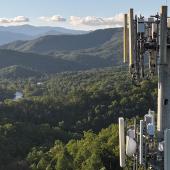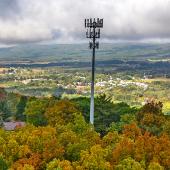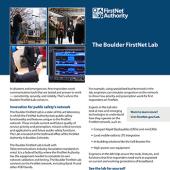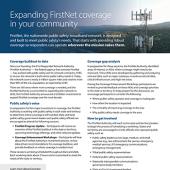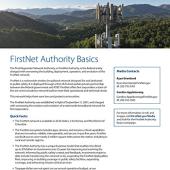Captain John Vallarelli started his journey in public safety more than 30 years ago as a dispatcher with the Westchester County (New York) Police Department. Since then, his career has taken him through the ranks of the Metropolitan Transportation Authority Police Department (MTAPD) in New York, where he now oversees the MTAPD’s Metropolitan Regional Radio System.
In 1998, Captain Vallarelli was assigned to the team that merged the Long Island Rail Road Police Department and the Metro-North Railroad Police Departments. He was designated as lead to merge the communications systems and dispatch functions of the two departments. This began the bulk of Captain Vallarelli’s career in communications. He assisted in completing and fitting out MTAPD’s emergency operations center in 2003, and he was the project manager for the now-defunct New York Statewide Wireless Network project.
Over the years, Captain Vallarelli has watched public safety communications evolve and transform. His role in various projects for the agency give him unique insight into what works for first responders and what they need in communications systems. “I was still a very young cop and young detective in the early days of broadband for public safety,” explained Captain Vallarelli. “But, having that opportunity and seeing the potential of what that could bring was why I've had the ability to help guide the department and partner agencies in the technology that's available today.”
Bridging gaps and connecting responders
Reflecting back on the early days of his career with the MTAPD, Captain Vallarelli recalls that officers communicated using a voice-only system. “We had a single channel simplex VHF system that covered the entire jurisdictional area of the Metro-North Railroad,” he explained. “In many places, there was no coverage. Dispatchers were dealing with some 70 different sites and having a real hard time finding our officers, knowing where they were.”
This caused significant challenges and was a major officer safety concern. With the merging of the police agencies for Metro-North and Long Island, Captain Vallarelli has been party to several solutions to bridge gaps and help officers communicate while working the entire MTA system. He was key to standing up the Metropolitan Regional Radio System (MRRS), a trunked 700-megahertz system with 65 sites and five channels, enabling officers to communicate from downstate New York to Connecticut.
This expanded network also enables greater interoperability with other public safety agencies in the region. As the MTA region covers nearly 5,000 miles, the ability to seamlessly communicate with other partners is key and allows for more efficient response.
Expanding communications throughout New York
The MRRS is not limited to interoperability between radio systems. When MTAPD was instructed to add 500 additional officers to the subway system, Captain Vallarelli and his team balked at the billions of dollars it would cost to extend the LMR system further underground. Instead, they turned to radios that can leverage LTE coverage from FirstNet. The radios have several channels that officers can switch between – one is the LMR system and others connect the officer to the adjoining LTE. Officers are able to communicate on the radio as if they were leveraging the LMR system, and the conversation travels back to dispatchers the same.
“The FirstNet solution supplied by AT&T provides a bridge where we do not currently have portable radio coverage and extends that coverage to places beyond the footprint of the MRRS,” said Captain Vallarelli. “Because of the footprint provided by AT&T, we were able to bridge into the system and provide more than the coverage that we needed for an exceptionally low recurring cost. And for the budget crunchers and the people who have to manage these budgets in these extremely tough times, the value add is incalculable.”
Looking to the future of public safety communications
With the advances in communications that Captain Vallarelli has witnessed and supported throughout his career, he can see how evolving technology will continue to ease operations for first responders into the future. The unique nature of the public-private partnership between the FirstNet Authority and AT&T makes the FirstNet solution particularly effective. From coverage to network resiliency and cybersecurity, FirstNet offers first responders functionality that meets their unique needs. For the MTAPD, as they started to deploy FirstNet, new capabilities arose – from access to local security cameras to providing in-building Z-axis data to school resource officers. Additionally, broadband is expanding situational awareness for dispatchers, officers, and commanders, allowing leaders to make more informed decisions.
Ensuring that these systems work for the ‘boots on the ground’ responders is also critical for Captain Vallarelli. “As a commander, I never forgot where I came from. I never forget who I serve,” he emphasized. “I take the responsibility of the system and the things that we've done here in the MRRS, but I know I'm only as good as the team behind me. Our effort here is driven by one team, one mission.” Because of that outlook, Captain Vallarelli seeks new apps, devices, and systems, that will support those using the technology to help make their jobs easier and more efficient.
“The end user is somebody who wants a communications system that works simply. The use of apps and other devices, if they're not fixed in a vehicle and running all the time, become very cumbersome for patrol officers, firefighters, or EMTs who are looking for rapid data access and rapid information,” he explained. “So, it's the integration of the back end with the front-end applications that is helpful.”














